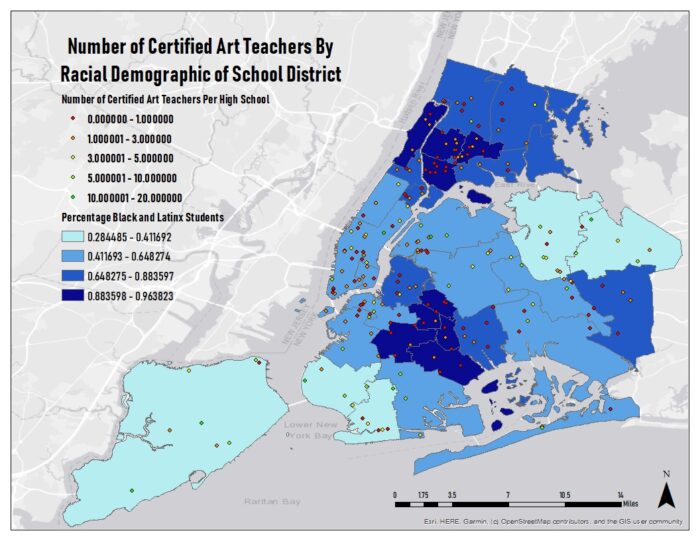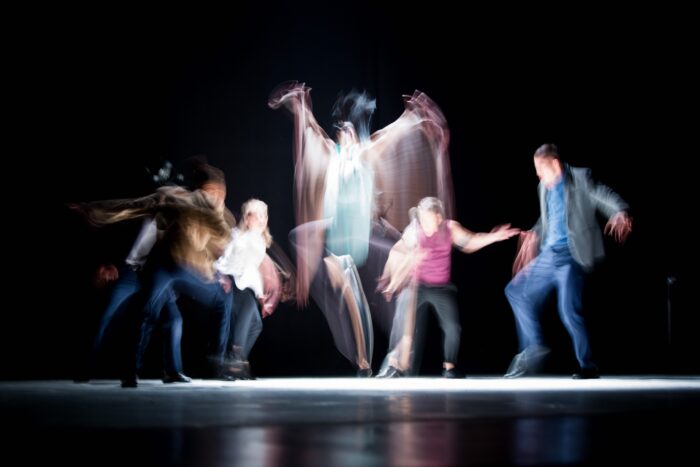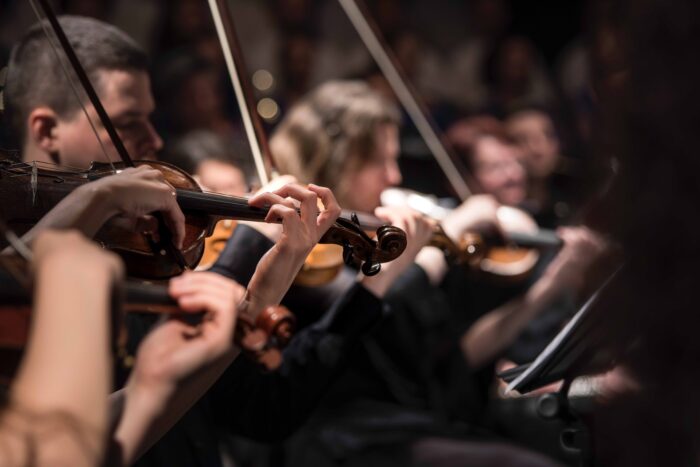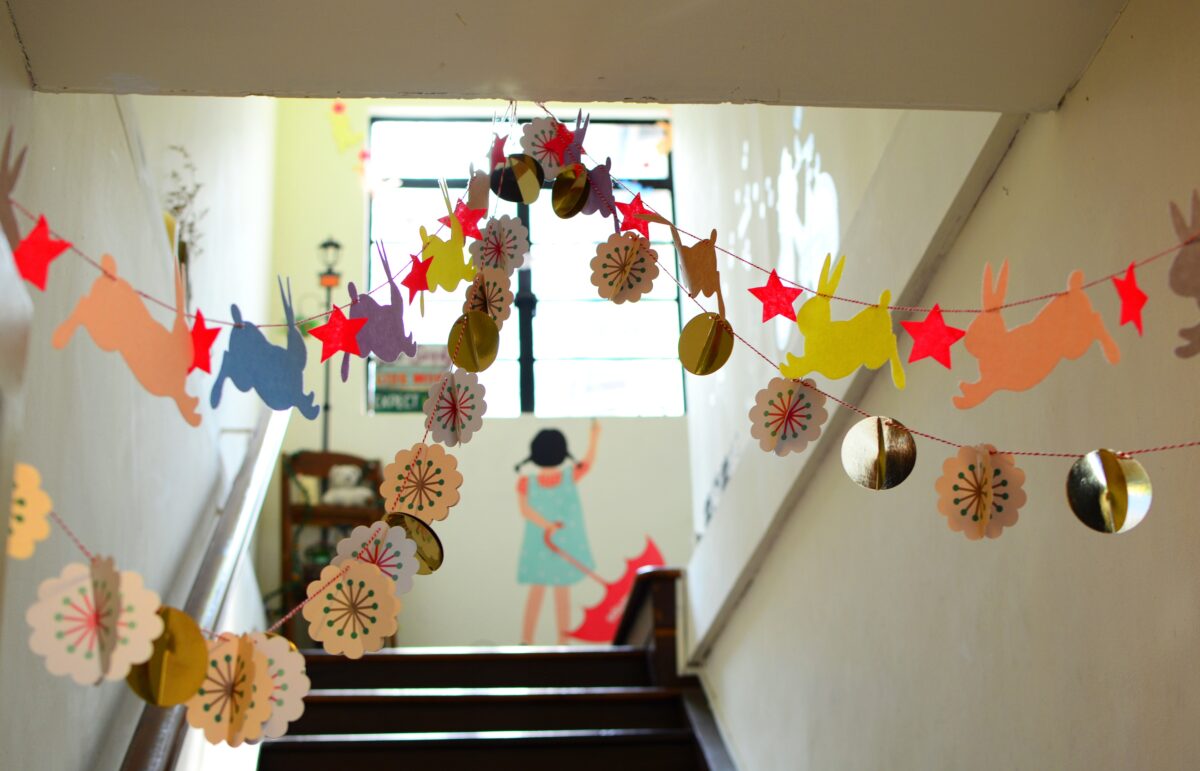At the end of last year, New York City’s Schools Chancellor Richard Carranza announced a record $433 investment in arts education during the span of 3 years, from the 2014-2015 school year to the 2017-2018 academic year. Using the increased funding, New York City schools hired more full-time certified arts teachers, engaged in cultural partnerships, and offered separate arts programs for multilingual learners and students with disabilities.
During the midst of highly contested discussions around school funding in NYC schools, some may find it surprising to see the Department of Education’s (DOE) decision on promoting arts education extensively, yet I believe that the incorporating arts education as a fundamental field of study in school’s curriculum can accomplish more than just a provision of knowledge and skills – engaging in arts improves students’ emotional intelligence, creative expression, anger management, and self-esteem. However, in order to make arts education more effective, especially in the context of NYC, DOE should implement culturally relevant arts curriculum catered towards diverse pool of students instead of centering it around Western ideals. I urge NYCDOE to continue investing in arts education while integrating curriculums that feature materials, works, ideas, and artists from variety of cultures.

Interestingly enough, a report “Staying in School: Arts Education and New York City High School Graduation Rates” from 2009 demonstrates that there is a strong correlation between NYC’s high school graduation rate and the quality of arts education offered at school. The study used “resource and access indicators” such as the number of dedicated arts classrooms, coursework in the arts, and school sponsorship of arts field trips to measure the quality of arts education offered from various perspectives.
In fact, the initial urge that led scholars to conduct this research was the dramatic increase of the high school dropout rate in 2008 across the country, in which most of the students who had dropped out identified as African American or Latinx. This crisis was especially apparent in New York City, where “the four-year graduation rate for the class of 2008 was a dismal 56 percent” and there was about 20% gap between White/Asian students and African American/Latinx students. As many of the students who dropped out reported that one of the primary reasons for leaving the school was their general disinterest in the content of their classes in school, administrators began to fully utilize arts education as “a means to prevent disengagement that usually predicts dropping out.”

source by New York State Education Department and NYC Open Data.
Created by Madi Delaney.
Whether or not NYCDOE recognized arts as academic focus that schools should devote their resources for, scholarly research conducted over the years evidently show that having arts curriculum in school is beneficial to all students even outside their studio, practice room, and theater. More specifically, arts education improves students’ cognitive abilities such as attention, intelligence, and motivation by providing a space and tools to express their feelings, personality, and ideas. Even for students who do not perform well in mainstream academic courses like English and Mathematics, they may excel in realms of arts in schools, which is extremely crucial to highlighting different ways students shine.

If you take a close look at each individual lesson plans for in art classes, it is clear that some art classes are dedicated to uplift students who may be considered ‘failing’ from the eyes of the authority. For instance, high school lessons designed for students with “severely disruptive, oppositional and aggressive behaviors” or “emotional disabilities” base their core philosophy around dance therapy model. The objectives of this Dance Making class are to express feelings freely through movement, enhance students’ self-esteem, increase their understanding on their own feelings, and become familiar with collaborating with others. The curriculum especially emphasizes the importance of improvising and choreographing as ways to physically translate their complex layers of emotions through movements. Although school administration’s tendency to over-surveil Black and Latinx students and frame them as troublemakers contribute to the institutionalized racism within the U.S. education system, the way arts education approach to students’ needs create drastically different consequences from just enforcing disciplinary actions such as suspension and expulsion. In arts classrooms, where there is no right or wrong, students feel more supported, accepted, and validated.

However, one could argue that arts education celebrates white capital, selecting Western arts as standards and masterpieces. For example, 57% of AP art history’s course materials covers of European and Colonial Americas, which students learn in the very beginning, while only 28% of the curriculum is dedicated towards history of non-Western cultures. This is very much prominent across art educational institutions where European art is considered the central discipline while arts from other cultures are just viewed as periphery. Even in New York City, many of the museums, theaters, and dance companies feature Western-centric works. Some of the most popular museums in the city such as The Metropolitan Museum, The Frick Collection, Neue Galerie, Museum of Modern Art, and Guggenheim Museum exhibit primarily art works from Western cultures – or the works that colonizers stole from other cultures. In fact, on a detailed curriculum map for visual art in NYC public high schools, Western artists overwhelmingly outnumber the artists who embrace non-Western cultures under “Suggested Artists” column. This shows that even NYC’s arts curriculum neglects the importance of representation and relevance.
What needs to be done to make arts curriculum in NYC more engaging to all students, including students of color, is to make it more culturally relevant and diverse. Instead of simply projecting white artistic standards, Black and Latinx students should be able to learn realms of arts from their culture. Without the effort to make arts education more culturally relevant and diverse, the curriculum will not be as effective to all students, and prioritizing Western arts perpetuates “colonizing knowledge” in school curriculum. A potential solution can be visiting diverse groups of artists and organizations in NYC as field trips. Moreover, hiring more art teachers of color could diversify the approach to art curriculum. Regardless, with increasing attention on the potential of arts education for its benefits for high school graduation rate and general well-being, we can expect that NYC will cherish what arts curriculum can offer as a crucial part of education, yet I hope to see more changes within the curriculum itself.
